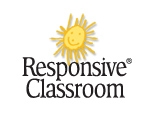Ideas for 4th Grade &
Older Students:
So now you have introduced Kehillah (or Morning Meeting)
to your students. Greetings, are well,
they are getting a little goofy. But
yet, you know the importance of helping each student feel part of the group (validated
and recognized), of making sure everyone knows each other’s name and providing
opportunities to extend derech eretz
– all necessary in building a class into a community. So what to do…
Responsive Classroom secular school teachers* are a great
resource, and have ideas that will work in our religious school
environment. Try out some of their
suggestions (tweaked by me):
· Practice a Hebrew Greeting (If
you are comfortable with this): How are
you? Or My name is? Teach the students a
few Hebrew words to use as answers.
· Pass the Greeting Ball:
Ok, you know this one. Student 1 greets
Student 2, Student 2 says the greeting back to Student 1 holding onto the ball.
Then Student 2 tosses the ball to Student 3 and greets Student 3, etc. VARIATIONS for OLDER STUDENTS:
o
Second time around. Silently (no greeting or talking), but this time the students have to repeat the
pattern of who the ball goes to next.
Again – now time it. Faster.
o
Repeat above – but now add one more ball,
going around in the same pattern. Then add another ball.
o
Do Greeting ball the first time. Now reverse the pattern and tweak the
greeting.
· Cross Circle Greeting: One
by one, students greet someone sitting on the other side of the circle who
hasn’t been greeted yet. Perhaps use a
theme – find someone wearing the same color as you… Use a signal to indicate –
been greeted (arms crossed, sit down, thumbs up).
 · Mix Match Cards: Create
a set of ‘cards’ (on the computer) with Questions & Answers or Go togethers
(Abraham & Sarah, Isaac & Rebecca- or something related to the learning
topic). Find your match – greet each other, perhaps ask a set question
(sharing)… this can be count as an activity also.
· Mix Match Cards: Create
a set of ‘cards’ (on the computer) with Questions & Answers or Go togethers
(Abraham & Sarah, Isaac & Rebecca- or something related to the learning
topic). Find your match – greet each other, perhaps ask a set question
(sharing)… this can be count as an activity also.
· Pantomime Greeting: Student 1 pantomimes something about herself
(favorite sport, hobby,). Class says,
“Boker Tov XXX” and mimics the
pantomime. Repeat around the circle.
Variation: add pantomimes from each
student as you go around. Time it, try
for speed.
· One Minute Greeting: use a Goofy or Fun Greeting signal (elbows,
hand jive, etc). In one minute students
have to greet as many students as possible (teacher and madrich also play).
Must look each other in the eye and use names!
Remember to model, teach and reinforce proper greeting
techniques: eye contact, being respectful, using proper words and body
movements… and have fun!
*taken from The
Morning Meeting Book K - 8 (3rd Edition) by Roxann Kriete &
Carol Davis





